This post may contain affiliate links. If you click one, we may earn a commission at no cost to you. Here's more details on how we make money.
The best time to visit Yellowstone is during the late spring and early summer months, specifically from May to June.
During this period, the park's natural beauty is at its peak, with wildflowers blooming and wildlife being particularly active. The weather is comfortably warm, yet not too hot, making it ideal for hiking and exploring the numerous trails.
Additionally, the crowds are usually thinner compared to the peak summer months, allowing for a more relaxed and enjoyable experience.
May and June also offer unique opportunities to witness the awakening of the park's flora and fauna. The melting snow reveals lush landscapes, and the rivers and waterfalls are full and vibrant from the spring runoff. This time is also excellent for bird watching, as many species are visible and active.
While some areas may still have lingering snow, especially in higher elevations, the main roads and attractions are generally accessible.
The park's geothermal features, like the famous Old Faithful geyser, are impressive year-round but are particularly striking against the backdrop of the fresh spring greenery.
Visiting during this window also allows you to avoid the busiest travel season of July and August when the park can become overcrowded and accommodations are harder to find.
Thus, late spring to early summer strikes a perfect balance between pleasant weather, active wildlife, fewer tourists, and the full accessibility of the park's features.
What is Yellowstone
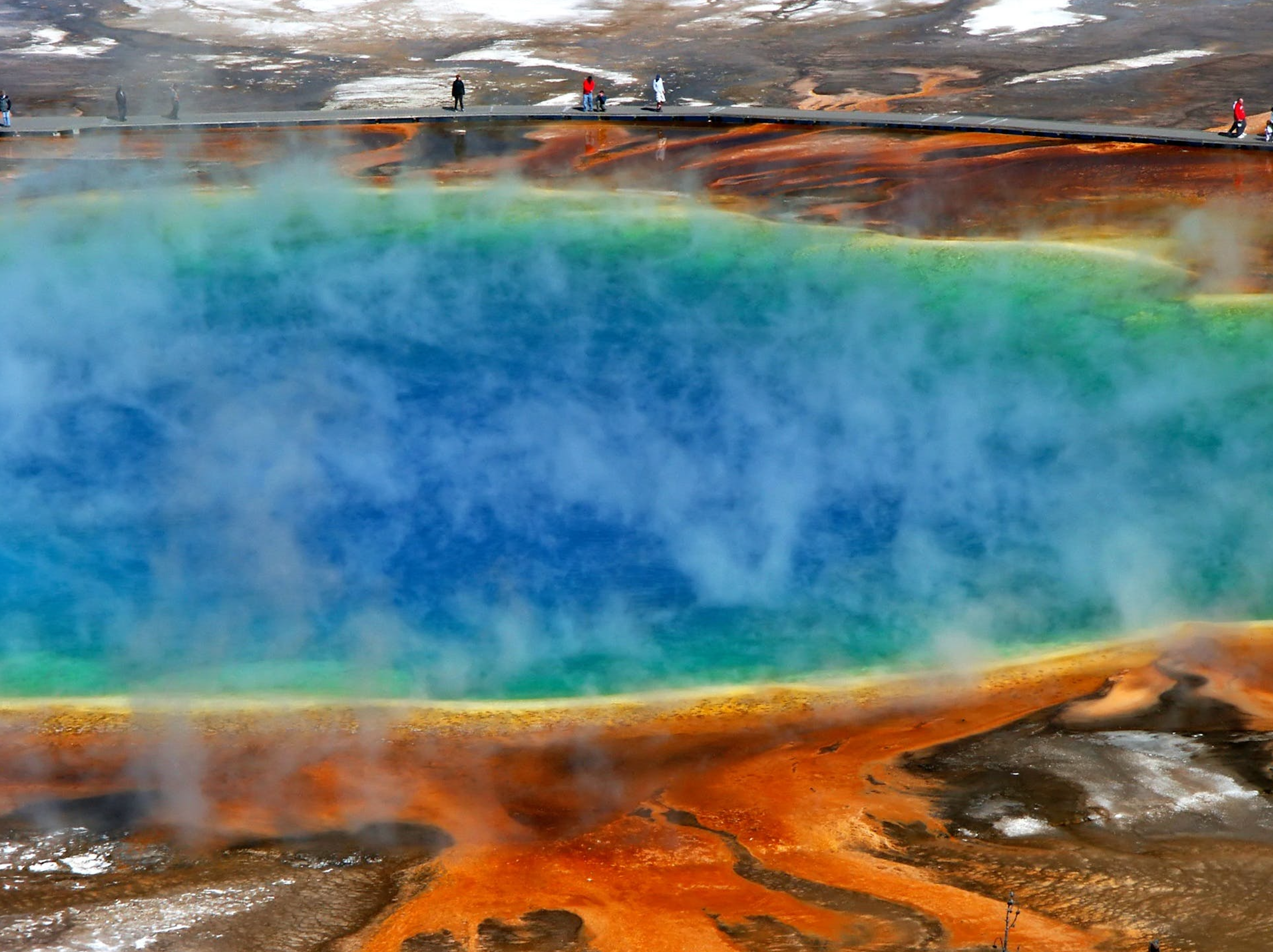
Yellowstone is a magnificent natural wonder, renowned as the first national park in the world. Established in 1872, it stretches over 3,500 square miles across Wyoming, Montana, and Idaho.
This park is a sanctuary of diverse wildlife and geothermal features. Home to hundreds of animal species, including bears, wolves, bison, and elk, it offers an extraordinary opportunity for wildlife viewing.
The landscape is dominated by the Rocky Mountains and features over 10,000 geothermal elements, including geysers like the iconic Old Faithful and colorful hot springs.
Yellowstone's rich history, stunning landscapes, and unique ecosystems make it a must-visit destination for nature lovers.
What Month is the Best to Visit Yellowstone
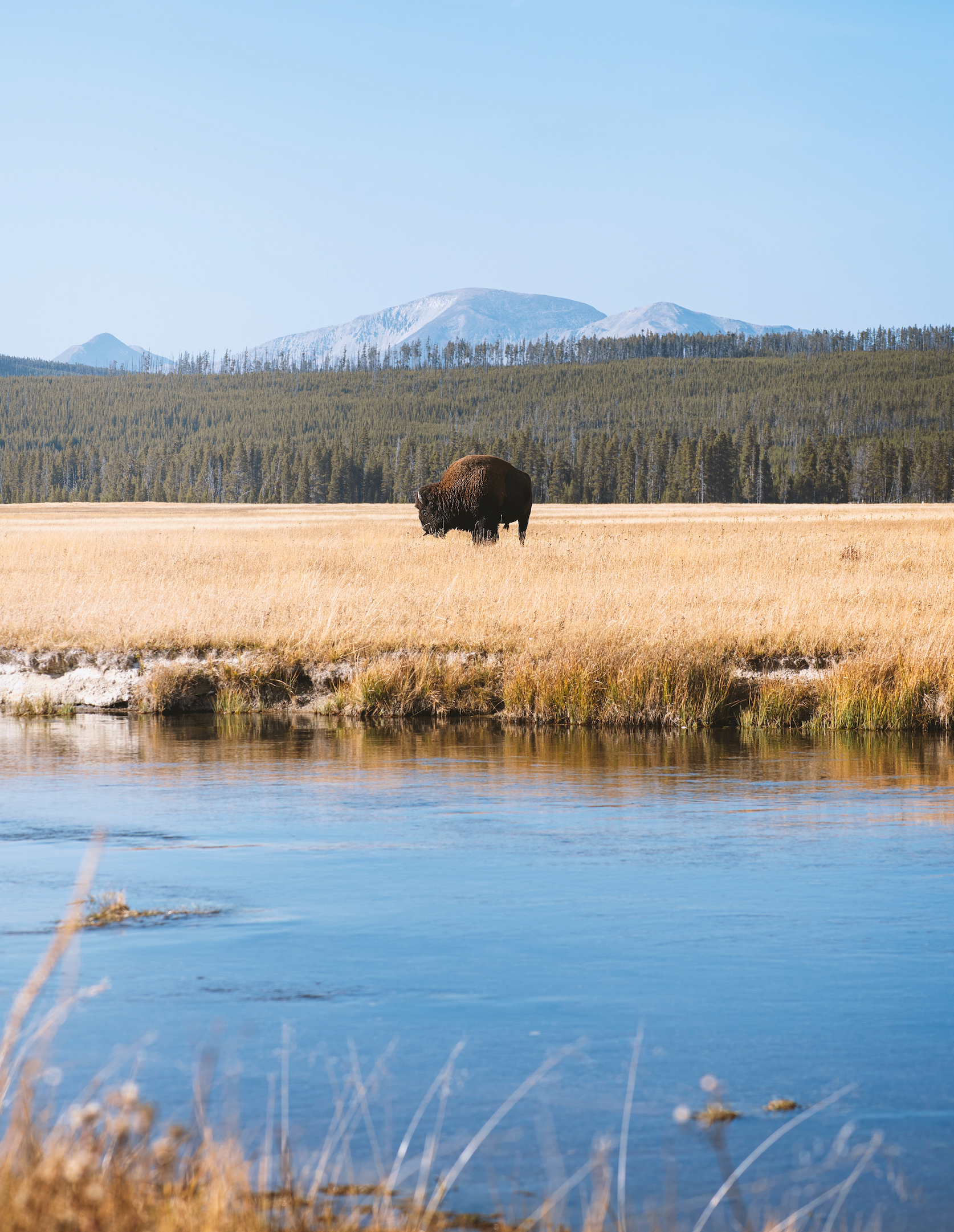
Visiting Yellowstone in January
In January, Yellowstone transforms into a winter wonderland. This is the time for snow enthusiasts to enjoy activities like cross-country skiing and snowshoeing. The park's geysers and hot springs create a stunning contrast against the snowy landscape, offering unique photographic opportunities.
Wildlife viewing is also rewarding, with animals like bison and elk more visible against the white backdrop. However, visitors should be prepared for cold temperatures and limited access to some areas of the park due to snow.
Visiting Yellowstone in February
February in Yellowstone continues the chilly, snowy ambiance, perfect for winter sports enthusiasts. Snowmobiling and guided snow coach tours are popular, allowing visitors to explore the park's remote areas.
The geothermal features are strikingly beautiful, surrounded by ice and snow. Wildlife such as wolves are more visible, especially in the Lamar Valley.
The park is less crowded, offering a peaceful experience. It's essential to be ready for extreme cold and check road closures before planning your visit.
Visiting Yellowstone in March
March begins to mark the transition from winter to spring in Yellowstone. Snow still covers much of the park, but the days start getting longer. This month is ideal for those who enjoy winter activities but prefer slightly warmer weather.
Wildlife like bears begin to emerge from hibernation, offering exciting viewing opportunities. The park remains relatively quiet, providing a tranquil visit, but travelers should still be prepared for variable weather conditions.
Visiting Yellowstone in April
April sees the onset of spring in Yellowstone. The snow starts to melt, revealing the first signs of greenery. This is a great time for wildlife enthusiasts, as animals become more active.
The park's famous bears are often spotted, along with newborn animals. While some areas may still be inaccessible due to snow, most of the park's main roads begin to open up.
Visitors in April should be ready for unpredictable weather, ranging from sunny days to spring snowstorms.
Visiting Yellowstone in May
May is an ideal month for those looking to experience Yellowstone's natural beauty without the summer crowds. The park is alive with blooming wildflowers and active wildlife, including bison calves and elk. The weather is pleasant, though there can be occasional rain showers.
Most roads and facilities are open, making it easier to explore the park's diverse landscapes. Visitors in May can enjoy a balanced experience of comfortable weather, accessible trails, and vibrant wildlife.
Visiting Yellowstone in June
June is one of the best times to visit Yellowstone. The weather is warm and sunny, perfect for hiking and wildlife watching.
The park is fully accessible, including its backcountry areas. Visitors can see the park in full swing, with active geysers and abundant wildlife, including newborn animals.
While June marks the beginning of the busy season, the park's vastness still offers plenty of space for exploration and solitude. Early June is less crowded, while later in the month, visitor numbers increase.
Visiting Yellowstone in July
July is the height of the tourist season in Yellowstone, offering warm and pleasant weather. This is an excellent time for hiking, camping, and sightseeing. The park's wildlife, including bison, elk, and grizzly bears, are frequently seen in their natural habitats.
Geothermal features like geysers and hot springs are particularly impressive. However, visitors should expect larger crowds and plan accordingly, possibly booking accommodations and campgrounds well in advance.
Despite the number of visitors, Yellowstone's expansive area ensures a fulfilling experience for all.
Visiting Yellowstone in August
August in Yellowstone is characterized by warm temperatures and active wildlife. It's a popular month for families and outdoor enthusiasts to enjoy the park's vast network of trails and scenic drives.
Fishing and boating are also popular activities during this time. While the park remains busy, the later part of August often sees a slight decrease in visitor numbers, making it a slightly more peaceful time to visit. Visitors should be aware of afternoon thunderstorms which are common during this month.
Visiting Yellowstone in September
September marks the beginning of autumn in Yellowstone, bringing cooler temperatures and fewer visitors. The park's foliage begins to change color, offering spectacular scenic views.
Wildlife is particularly active as animals prepare for the winter, providing excellent opportunities for wildlife photography. Fishing is at its peak, and the weather is generally stable and pleasant, though nights can be chilly.
This month combines the benefits of summer's end and the onset of autumn, making it an ideal time for those seeking a quieter visit.
Visiting Yellowstone in October
October in Yellowstone is a time of dramatic change. The fall colors are at their peak early in the month, creating breathtaking landscapes. The park is much quieter after the busy summer season, offering a more solitary experience.
Wildlife viewing is excellent, with animals like elk and deer in the midst of their mating seasons. However, visitors should be prepared for a wide range of weather conditions, from warm and sunny days to early winter snowfalls.
Some facilities begin to close for the winter, so it's important to check availability in advance.
Visiting Yellowstone in November
November in Yellowstone is the start of the winter season, with cold temperatures and snow beginning to accumulate. The park's winter beauty starts to unveil, but access becomes more limited as some roads close due to snow.
This month offers a unique experience for those who enjoy winter landscapes and solitude. Wildlife viewing remains good, with animals more visible against the snowy background.
It's a perfect time for photographers and nature enthusiasts who prefer a quiet, introspective visit to the park.
Visiting Yellowstone in December
December in Yellowstone is a full-on winter experience. The park is covered in snow, creating a serene and picturesque landscape. It's a great time for winter activities like snowshoeing and cross-country skiing.
Wildlife such as bison, elk, and wolves are still active, offering compelling viewing opportunities. Visitor numbers are low, providing a peaceful atmosphere. However, travelers should be ready for very cold temperatures and ensure they are prepared for winter conditions.
The unique beauty of Yellowstone under a blanket of snow makes December a special time for a winter adventure.
Yellowstone Weather Guide
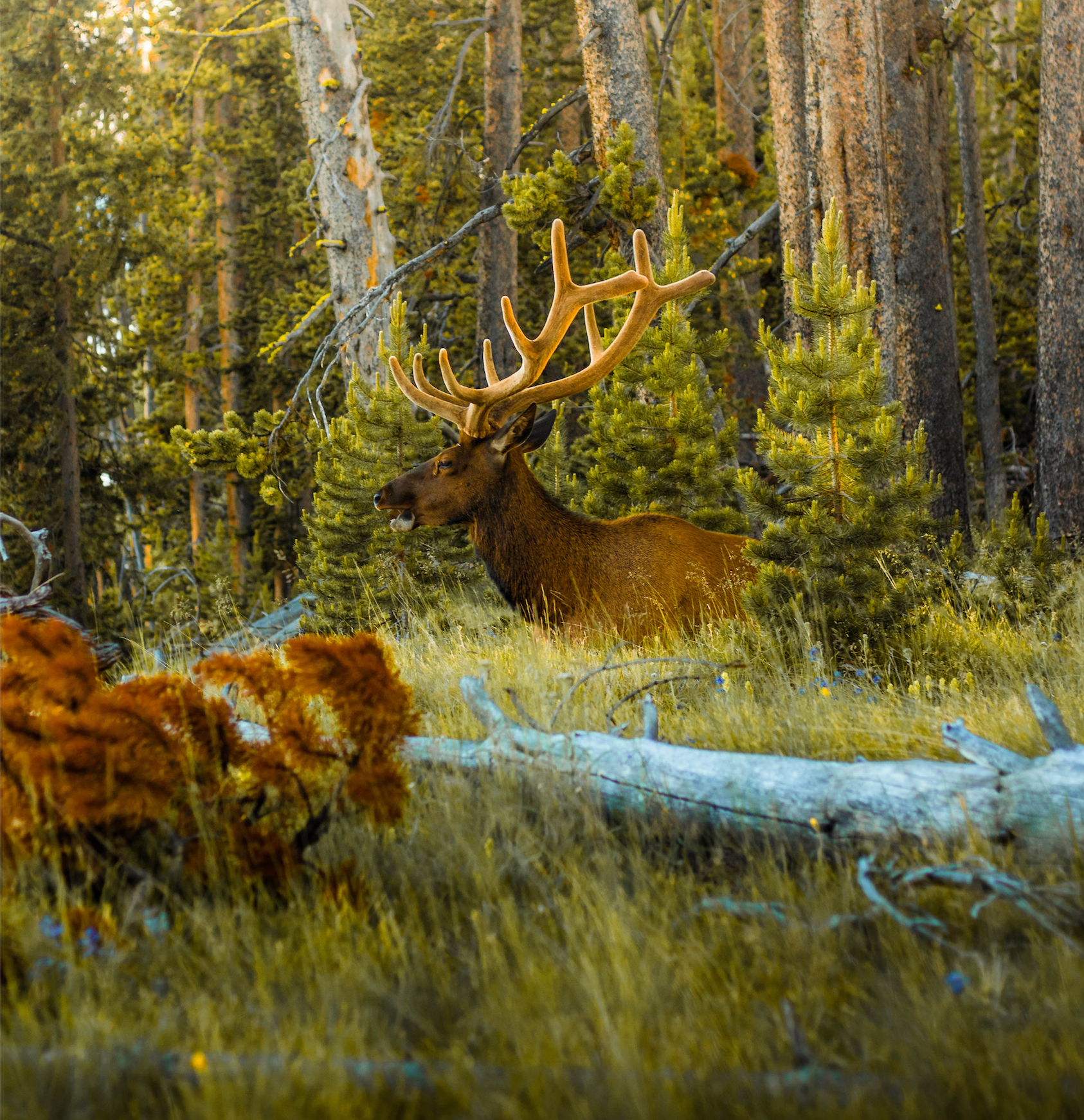
Yellowstone National Park experiences a dynamic range of weather conditions, shaped by its high elevation and rugged terrain. Summers are brief, offering comfortable, dry conditions ideal for outdoor activities. The warmest months are from June to August, with daytime temperatures often reaching the mid-70s°F (around 24°C). Nights can still be cool, even in summer.
Conversely, winters are long and cold, with substantial snowfall. From November to March, temperatures often hover in the sub-freezing range. This creates a picturesque snowy landscape, perfect for winter sports but requiring ample preparation for the cold.
Spring and autumn are transitional periods, featuring a mix of warm and cold days, with snow possible well into May and starting again in October. These seasons offer quieter park experiences and unique natural beauty but can be unpredictable weather-wise. No matter the season, visitors should be prepared for sudden changes in weather, which are common in Yellowstone.
Yellowstone National Park Weather Year Round Table
| Month | High / Low (°F) | High / Low (°C) | Rain (Days) |
|---|---|---|---|
| January | 25 / 5 | -4 / -15 | 7.4 |
| February | 30 / 7 | -1 / -14 | 6.6 |
| March | 38 / 14 | 3 / -10 | 7.1 |
| April | 47 / 23 | 8 / -5 | 8.0 |
| May | 55 / 31 | 13 / -1 | 10.7 |
| June | 66 / 38 | 19 / 3 | 8.5 |
| July | 75 / 43 | 24 / 6 | 5.9 |
| August | 74 / 42 | 23 / 6 | 5.7 |
| September | 64 / 35 | 18 / 2 | 5.5 |
| October | 50 / 27 | 10 / -3 | 6.0 |
| November | 35 / 17 | 2 / -8 | 7.9 |
| December | 26 / 8 | -3 / -13 | 8.2 |
This weather data is provided by Weather Spark.
Yellowstone Travel Guide and Trip Ideas
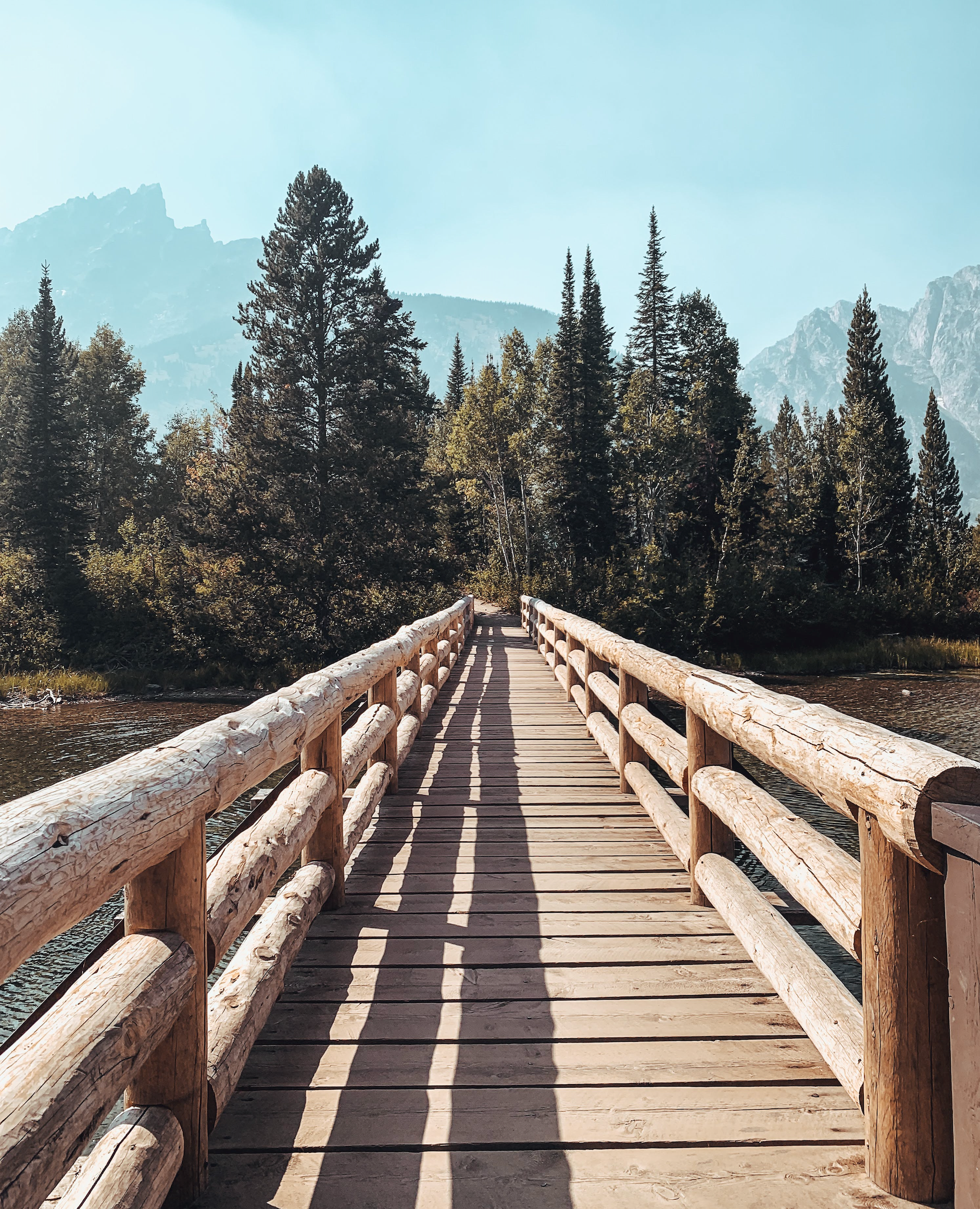
Yellowstone National Park is a treasure trove of natural beauty, offering a diverse array of sights and activities. This guide will help you discover the best places to visit, exciting things to do, comfortable accommodation options, and recommended tours to make your trip memorable.
Places to Visit in Yellowstone
Yellowstone is filled with must-see locations that showcase the park's unique geothermal activity and stunning landscapes.
- Yellowstone Lake: The largest high-elevation lake in North America, known for its stunning views and boating opportunities.
- Old Faithful: The most famous geyser in the park, known for its predictable eruptions.
- Grand Prismatic Spring: The park's largest hot spring, admired for its vivid colors.
- Lamar Valley: A prime spot for wildlife viewing, especially for spotting wolves and bison.
- Mammoth Hot Springs: A series of terraces formed by limestone deposits, offering a unique geological sight.
- Hayden Valley: Another excellent location for wildlife observation, particularly for herds of bison.
What to Do in Yellowstone (Top Things to Do)
From outdoor adventures to leisurely strolls, Yellowstone offers activities for all ages and interests.
- Wildlife Watching: Spot bison, elk, bears, and wolves in their natural habitat.
- Hiking: Explore over 900 miles of trails ranging from easy boardwalks to challenging backcountry hikes.
- Fishing: Enjoy world-class fishing in Yellowstone's rivers and lakes.
- Photography: Capture the park's breathtaking landscapes and diverse wildlife.
- Geyser Watching: Witness the spectacular eruptions of the park's numerous geysers.
- Camping: Experience the wilderness up close by staying at one of the park's many campsites.
Where to Stay in Yellowstone
Accommodation in Yellowstone ranges from rustic campsites to luxurious lodges.
- Old Faithful Inn: A historic hotel with stunning views of the Old Faithful Geyser.
- Canyon Lodge and Cabins: Offers comfortable lodging near the Grand Canyon of the Yellowstone.
- Mammoth Hot Springs Hotel: Located near the Mammoth Hot Springs, ideal for easy access to northern park attractions.
- Lake Yellowstone Hotel: A charming hotel with views of Yellowstone Lake.
- Roosevelt Lodge Cabins: Rustic cabins providing a more secluded stay.
- Various Campgrounds: Numerous campgrounds throughout the park for those who prefer camping.
Best Tours in Yellowstone

Guided tours can enhance your Yellowstone experience, offering insights and access to hidden gems.
- Wildlife Safari Tours: Guided tours focused on wildlife observation in the Lamar and Hayden Valleys.
- Geyser Basin Tours: Explore the park's geothermal areas with an expert guide.
- Photography Tours: Led by professional photographers to capture the park's most photogenic spots.
- Hiking Tours: Guided hikes that cater to various skill levels, revealing lesser-known trails and vistas.
- Winter Snowcoach Tours: Travel through the snowy landscape to see Yellowstone in winter.
- Custom Private Tours: Personalized tours tailored to your interests and preferences.
When is the Best Time to Travel to Yellowstone
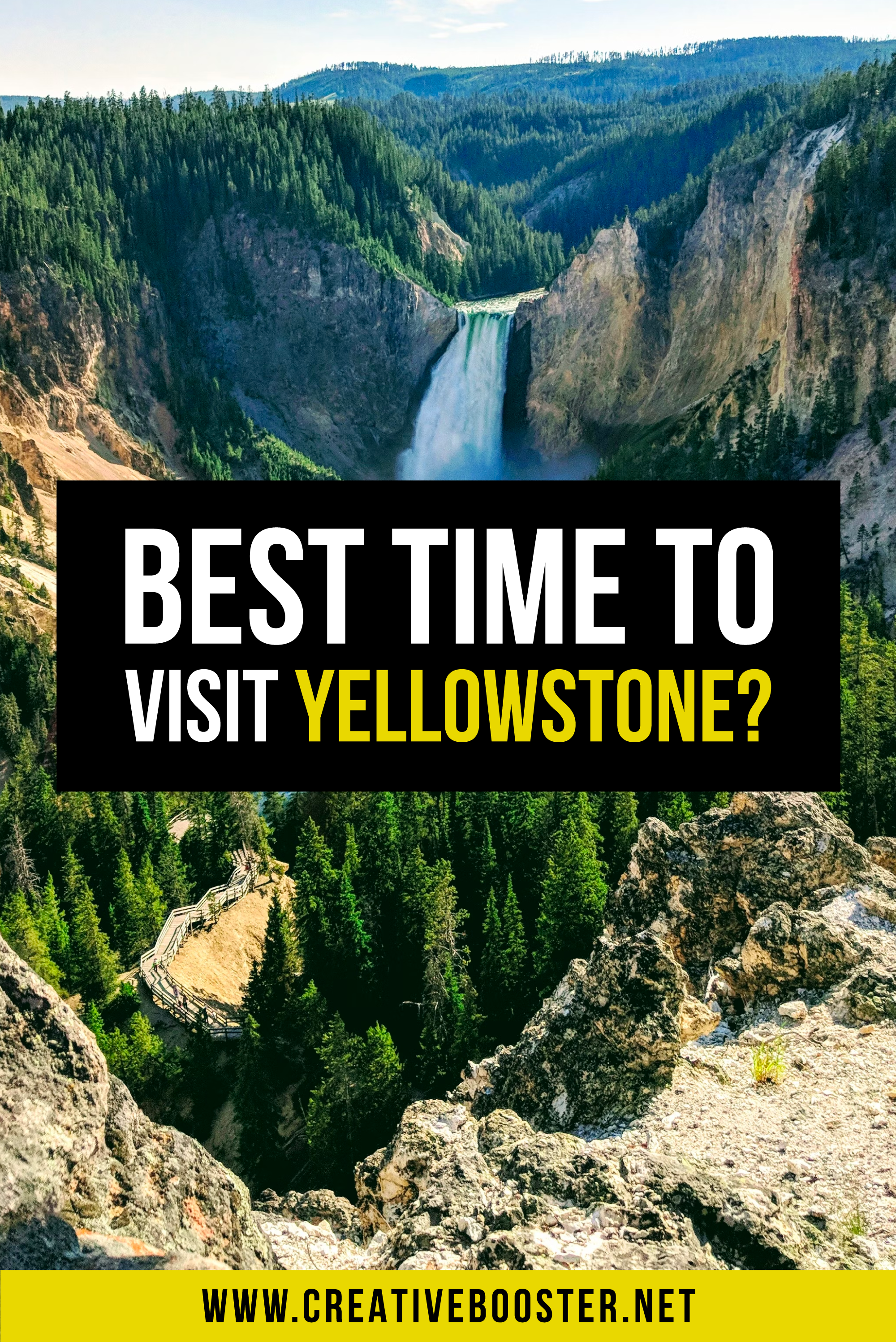
Best Time to Visit Yellowstone in Winter
Winter in Yellowstone, from December to early March, offers a unique and peaceful experience. It's ideal for those who enjoy snowy landscapes and winter sports like cross-country skiing and snowshoeing.
The geysers against a backdrop of snow are exceptionally striking. Wildlife sightings, especially of wolves, are more frequent in the Lamar Valley. However, visitors should be ready for cold temperatures and limited accessibility to some park areas.
Best Time to Visit Yellowstone in Summer
The peak season in Yellowstone is from late June to August. This period provides warm weather, clear skies, and full access to all park areas, including hiking trails and campsites. It's perfect for typical park activities like hiking, wildlife watching, and geyser viewing.
The park's flora is in full bloom, creating a picturesque setting. However, this is also the busiest time, so expect more visitors and plan for accommodations in advance.
Best Time to Visit Yellowstone in Spring
Late April to early June marks the spring season in Yellowstone. This time is excellent for those who want to experience the park's renewal, with melting snows, emerging wildlife, and blooming flowers.
Bear sightings are common as they come out of hibernation. The weather can be unpredictable, with a mix of sunny days and late snowfalls. Fewer tourists during this period means a more relaxed visit, but some areas might still be inaccessible due to snow.
Best Time to Visit Yellowstone in the Fall
September to early November is the fall season in Yellowstone. The park is aglow with autumn colors, and the wildlife, especially elk and bison, is very active. The weather is cooler and more stable, ideal for hiking and photography.
Visitor numbers decrease significantly, offering a quieter experience. Early snowfalls are possible, so visitors should be prepared for a variety of weather conditions.
Best Time to Visit Yellowstone for Wildlife
The best time for wildlife viewing in Yellowstone is in the spring and early summer, from April to June. This is when animals are most active, with many species visible and engaging in mating and rearing activities.
The fall is also excellent for observing elk during the rutting season. Wildlife enthusiasts should consider visiting during these times for the best chances of sightings.
Best Time to Visit Yellowstone to Avoid Crowds
To avoid crowds, consider visiting Yellowstone during the shoulder seasons – April to May and September to October. During these months, the park experiences fewer visitors, offering a more solitary and intimate experience with nature.
The weather is variable, so visitors should come prepared for a range of conditions. These months also offer unique natural beauty, with spring's awakening or fall's vibrant foliage.
Worst Time to Visit Yellowstone
The worst time to visit Yellowstone is during the late fall and early winter months, particularly from late October to November. During this period, the weather can be highly unpredictable, often bringing cold temperatures, snow, and road closures.
Many of the park's facilities and lodges begin to close for the season, significantly limiting accommodation and dining options. The transitional nature of the weather also means that winter activities like skiing are not yet viable, while summer activities are hindered by the cold and snow.
Therefore, visitors during this time may find their experience limited by both accessibility and comfort.
Best Time to Visit Yellowstone FAQ
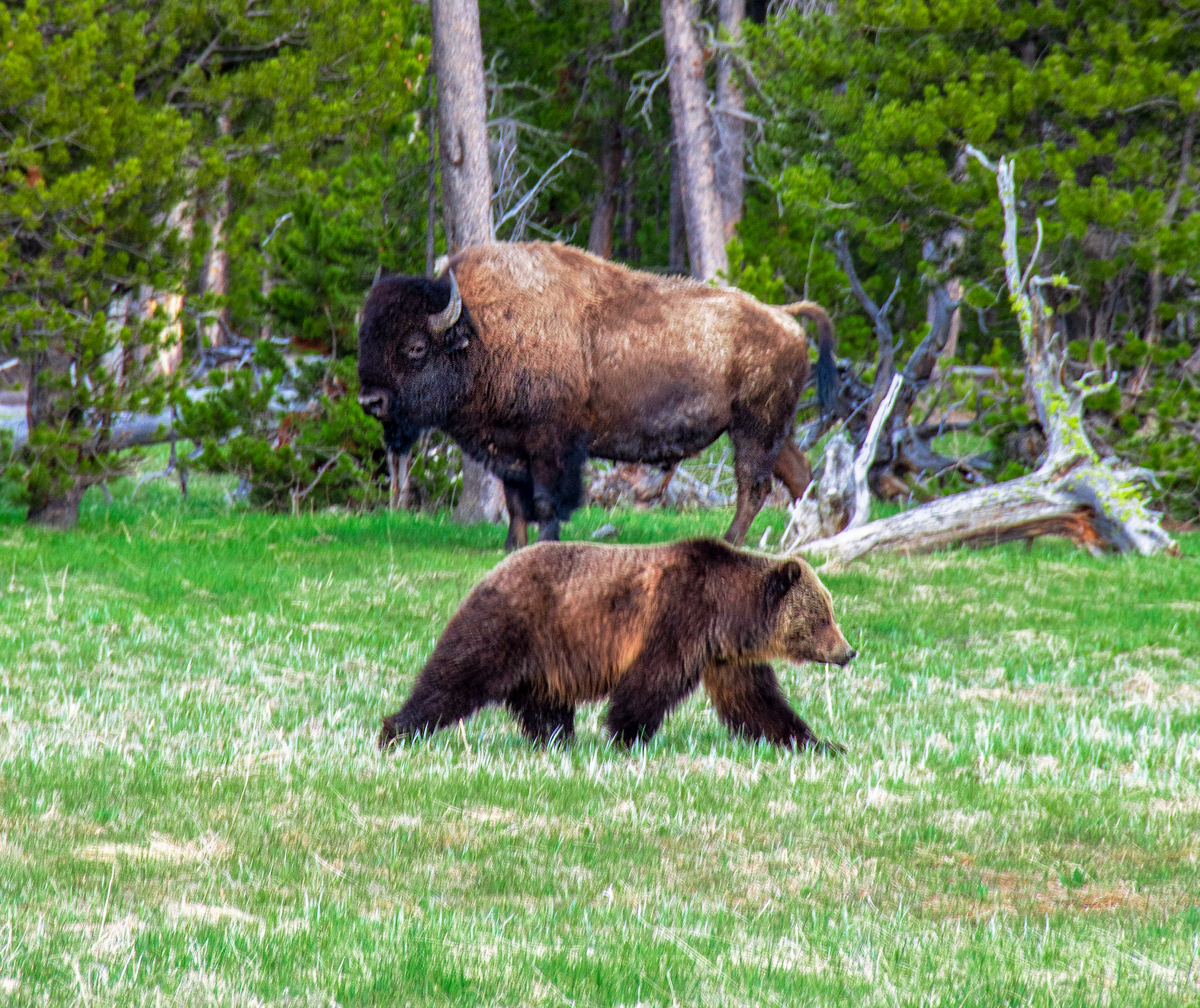
What is the overall best month to visit Yellowstone?
The best month to visit Yellowstone is typically June. During this time, the weather is pleasant, wildlife is active, and all park facilities and roads are usually open. The natural beauty of the park is in full bloom, offering ideal conditions for hiking, photography, and wildlife watching.
When can I see the most wildlife in Yellowstone?
The prime time for wildlife viewing in Yellowstone is in the spring, from April to June. This is when animals are most visibly active, with newborn wildlife making their first appearances and bears emerging from hibernation.
Is Yellowstone crowded in the summer?
Yes, Yellowstone can be quite crowded in the summer, especially from July to August. This is the peak tourist season due to favorable weather conditions and school vacations, so expect larger numbers of visitors and crowded attractions.
Can I visit Yellowstone in the winter?
Yes, Yellowstone is open in the winter and offers a unique experience with snow-covered landscapes. Activities like snowshoeing and cross-country skiing are popular. However, access is limited to certain areas, and preparation for cold weather is essential.
Are facilities in Yellowstone open year-round?
Not all facilities in Yellowstone are open year-round. Many lodges, campgrounds, and visitor centers have seasonal operations, typically closing in the late fall and reopening in the spring. It's important to check the status of facilities before planning a visit in the off-season.
When is the best time to visit Yellowstone to avoid crowds?
The best time to visit Yellowstone to avoid crowds is during the shoulder seasons, which are April to May and September to October. These periods offer a quieter experience with fewer tourists, though weather conditions can be more variable.


